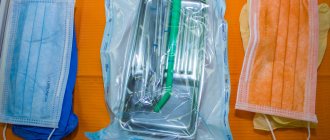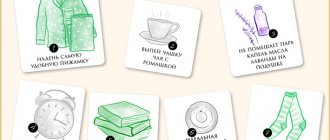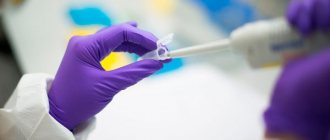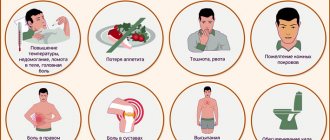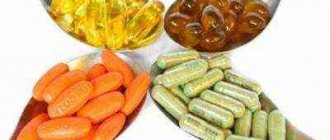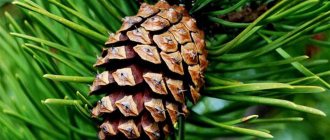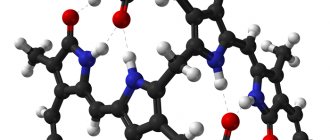The word "onychocryptosis" is unfamiliar to most people. Meanwhile, underneath it lies a very common problem: this is what doctors call the ingrowth of the edge of the nail into the surrounding tissue, causing an inflammatory process. Typically, the disease affects the big toes, which is accompanied by redness, swelling, and in advanced cases, discharge of pus. Patients complain of pain that gets worse when walking, and difficulty choosing shoes.
The reasons for the development of the disease may be different. Most often, ingrown toenails occur due to poor personal hygiene, wearing shoes that are too tight, or improperly trimming nails. Sometimes the problem appears due to a fungal infection or due to an unprofessional pedicure. In any case, the patient experiences serious inconvenience.
Onychocryptosis can be treated surgically, but in the early stages it can be treated with traditional methods based on the use of agents that soften and straighten the nail plate. In cases where the procedure consists of applying a compress with healing ointment to the finger, it must be preceded by a foot bath with any bactericidal agent. As a rule, a solution of furatsilin or a decoction of medicinal herbs (chamomile, sage, etc.) is used for this purpose.
Butter
Let's start with one of the most famous folk recipes. Softened butter is placed in a fingertip, which is pulled over the damaged finger after the bath. If the edge of the nail plate does not fit very tightly to the skin, you can simply place a piece of cotton wool with oil under it. Pain and inflammation disappear on the second or third day, and after two weeks of daily procedures, the edge of the nail is smoothed out and can be trimmed normally.
Source: depositphotos.com
Ingrown toenail: 10 folk remedies to get rid of the problem
The word "onychocryptosis" is unfamiliar to most people. Meanwhile, underneath it lies a very common problem: this is what doctors call the ingrowth of the edge of the nail into the surrounding tissue, causing an inflammatory process. Typically, the disease affects the big toes, which is accompanied by redness, swelling, and in advanced cases, discharge of pus. Patients complain of pain that gets worse when walking, and difficulty choosing shoes.
The reasons for the development of the disease may be different. Most often, ingrown toenails occur due to poor personal hygiene, wearing shoes that are too tight, or improperly trimming nails. Sometimes the problem appears due to a fungal infection or due to an unprofessional pedicure. In any case, the patient experiences serious inconvenience.
Onychocryptosis can be treated surgically, but in the early stages it can be treated with traditional methods based on the use of agents that soften and straighten the nail plate. In cases where the procedure consists of applying a compress with healing ointment to the finger, it must be preceded by a foot bath with any bactericidal agent. As a rule, a solution of furatsilin or a decoction of medicinal herbs (chamomile, sage, etc.) is used for this purpose.
Aloe
The remedy is prepared from a plant older than three years. The aloe leaf needs to be crushed. A piece of cotton wool or the pulp of a leaf soaked in the resulting juice should be applied to the finger at the site of the ingrown nail, secure the compress with cling film and leave overnight. The product perfectly relieves inflammation and helps straighten the nail plate at the initial stage of the disease.
Source: depositphotos.com
Symptoms of an ingrown toenail
The fact that the nail on the big toe is growing incorrectly can be understood by the following signs:
- There is a sharp pain in the area of the thumb. Sometimes the painful sensations are so strong that they prevent a person from moving freely;
- a dense ball forms at the site of ingrowth, which, when pressed, can exude pus and an unpleasant odor;
- a small bleeding wound appears that does not heal.
Today, experts distinguish 3 stages of development of this disease:
- The first stage - the initial stage - is considered the easiest and most quickly removable. It will be indicated by swelling in the area of the thumb, blueness or redness of part or all of the nail plate, acute pain when pressing, discomfort when wearing shoes.
- The second stage - middle - is difficult to treat at home; most likely, you will need the help of a professional. But it is still possible to do without surgical intervention. The stage is characterized by an infectious inflammatory process; a ridge or tubercle appears at the site of ingrowth, which festers, smells bad, and the person feels discomfort when walking even without shoes.
- The third stage – final (chronic) – is called the most dangerous. This is the first step to pathological changes in the foot and gangrene. Next - just remove the entire finger. To prevent this from happening, you don’t need to delay visiting the doctor. A surgeon in a clinic or private hospital will help you deal with the problem. Most often, hospitalization is not required. The stage is characterized by sharp, persistent pain in the area of the finger, a bleeding wound, purulent discharge, an unpleasant odor, and a pronounced growth.
Lemon zest
You can apply a mixture of vegetable oil and finely grated lemon zest to an ingrown toenail overnight. First, the leg must be steamed in a bath with a solution of baking soda. The result is noticeable the next morning: the nail becomes more flexible; its edge can be carefully straightened and cut off.
Source: depositphotos.com
Nail treatment with sea buckthorn oil
The following recipe will tell you not only how to treat an ingrown toenail, but also how to eliminate inflammation, which is manifested by swelling and redness. If the nail has grown too deeply into the finger, first take a bath with potassium permanganate. After this, drip sea buckthorn oil onto the affected finger. Wrap it with a plantain leaf, slightly kneading it. Secure the bandage with a bandage.
And to ensure that the treatment of an ingrown toenail does not go in vain, put a sock on your foot. By morning the nail will soften. Pry it off and place a cotton ball under the nail plate, which needs to be soaked in pharmaceutical sea buckthorn oil. In addition, the healing properties of sea buckthorn are much wider than you imagined.
You'll also like - If you don't want blood clots, just drink this cocktail
Onions with honey
A similar result is obtained when using grated raw onion with the addition of honey for a compress. The mixture is wrapped in gauze and applied to the leg overnight, wrapped in cling film. The remedy is very effective: it also works in advanced cases when there is already a purulent process.
Source: depositphotos.com
Lamb fat
A mixture of fat and alkali helps soften and straighten the nail plate. A well-known folk remedy is prepared as follows: a little grated laundry soap is added to crushed lamb fat, the resulting mixture is heated and applied to the sore finger, pulling the fingertip over the top. To prevent the fat from hardening as it cools, the compress is insulated with cotton wool, a wool sock is put on the foot and left for five to six hours. The procedure can be repeated until the signs of the disease completely disappear and a healthy nail grows back.
Source: depositphotos.com
How to treat an ingrown toenail at home
The easy and safe removal of ingrown toenails at home is facilitated by parallel tasks. These include:
- removal of the purulent-inflammatory process;
- pain reduction;
- wound healing;
- ensuring conditions for unhindered growth of the nail plate.
Before removing an ingrown toenail, it is necessary to soften it using specially prepared products. This will provide a safer and easier way to process and cut the problematic part of the nail plate. Here are some healthy recipes prepared at home.
Aloe juice
The healing properties of aloe leaves are used to relieve inflammation and heal wounds. Mode of application:
- pick a fresh aloe leaf;
- wash under running water;
- trim the thorns;
- cut in half along the rib;
- apply to the sore finger;
- cover with cellophane;
- bandage.
The procedure is performed at night. In the morning, after the swelling subsides, the nail will soften, the inflammation will go away, and the wound will heal. A sharp piece that has become embedded in the skin must be carefully cut off and trimmed with a manicure file. An antimicrobial ointment (Levomekol, Biomitsin, Baneocin, etc.) should be applied to the problem area.
Salt
Another treatment with folk remedies is salt steaming. They help reduce swelling, relieve inflammation and pain. Classic recipe:
- For 1 liter of hot water take 1 tbsp. l. sea salt (you can also use regular table salt);
- dissolve salt in water;
- soak the gauze bandage;
- put on the finger;
- a plastic bag is put on the leg;
- Wrap in a shawl or blanket for 30 minutes.
In advanced stages, a hot salt compress will help the ulcers open, but it is not recommended for use in the presence of open wounds. After steaming, your fingers should be lubricated with nourishing cream. Usually the procedure is repeated once a day until complete healing.
Furacilin
You can buy a ready-made solution, but you can also make it yourself by dissolving the tablets in water (2 pieces per 1 glass). It should be taken into account that solid forms take a long time to dissolve; it is better to fill them with water in advance and then heat them up (or crush the tablets into powder before preparing). The disinfectant composition is capable of:
- relieve inflammation;
- reduce pain;
- soften the skin and stratum corneum of the nail.
A hot compress is applied in the classic way. You can add a solution of potassium permanganate to its composition (at the tip of a knife).
Vishnevsky ointment
Now pharmacies more often offer balsamic Liniment (according to Vishnevsky). The drug includes:
- birch tar (has strong antibacterial properties, promotes blood circulation, dries and anesthetizes);
- xeroform (has an astringent and antiseptic effect);
- fish oil (moisturizes, soothes and nourishes tissues).
Vishnevsky's ointment contains castor oil (instead of fish oil). Castor oil is characterized by a pungent odor, but has good regenerating properties. To cure an ingrown toenail, apply the ointment at night. In the morning, the softened plate is easily removed.
Butter
In the absence of other means, butter is used as first aid for onychocryptosis. Mode of application:
- soak your feet in a soda bath for 20 minutes (1 teaspoon of soda per 1 liter of water);
- wipe dry;
- steam the oil, soak gauze in it and apply to the sore finger;
- cover with a bandage and leave overnight.
The oil relieves puffiness and softens the skin. After such a compress, the sharp edge that causes pain is easily removed and trimmed.
Sawing in the middle
Thinning the nail plate or filing it in the middle is used when the nail grows from the root. The process looks like this:
- The nail is thinned over the entire surface with a file;
- when pressing on the middle, its edges easily rise;
- it will be easier to process them and straighten the ingrown part;
- After this, the nail will begin to grow correctly.
Filing in the middle (without thinning the entire plate) will give the same result if the nail tissue is thin. It is better to soften them first using a bath according to any recipe or with a compress.
Birch chaga mushroom
Black birch mushroom (chaga) is best collected in spring. Its layered structure consists of 3 parts (the middle one is used to prepare the infusion). It is easier to buy a ready-made (dried and crushed) composition at a pharmacy and brew it according to the method given in the instructions. Chaga contains a rich mineral composition, acids (oxalic, acetic, formic), resins, phytoncides, sterols, alkaloids, and polyphenols. The mushroom is infused in a thermos or poured with boiling water (per 100 g of 1 liter of water) and left for 5 hours to brew. Chaga is often drunk as tea, but compresses are used for ingrown toenails.
Regular use helps:
- softening the nail;
- disinfection;
- relieving pain and swelling;
- wound healing.
Fir oil
To soften ingrown nails, use fir oil (sold in pharmacies). The composition is ready for use. You need it:
- pour onto a cotton pad;
- apply to the thumb;
- tie;
- leave overnight.
The composition can simply be rubbed into the nail plate (2-3 times a day), as well as baths. Fir oil is a strong antiseptic, softens the nail, and with regular use helps remove fungal infections.
Onions and honey
A honey-onion compress is prepared based on onion juice and bee honey:
- grate 1 onion;
- squeeze out onion juice;
- honey is added in equal proportions;
- The finished composition is applied to a finger previously steamed in soda.
The compress is left overnight, it helps soften the skin, and in the morning the ingrown area is easily and painlessly removed from the softened tissue and trimmed. After this, make a soda bath again. You can also prepare a special onion ointment that can soften the nail plate:
- 1 onion chopped;
- the resulting gruel is mixed with interior lard (1 tbsp.);
- The mass is applied to the sore finger at night.
Plantain
The well-known weed has a strong anti-inflammatory effect. If the ingrown toenail is not yet in an advanced stage, you can get rid of the problem with the help of plantain compresses. Unfortunately, the method is only available in summer, since fresh young plants are needed for treatment. One leaf should be mashed, the paste should be applied to the sore finger and a whole leaf of plantain should be wrapped on top, securing it with a bandage or cling film. The compress must be changed daily for a week.
Source: depositphotos.com
Vegetable mix
To prepare a healing ointment, you need to take one tablespoon of pureed gruel from onions, garlic and aloe leaves, add a tablespoon of butter and a teaspoon of high-quality beeswax. The mixture is heated and boiled for 2-3 minutes over low heat, stirring it with a wooden spoon. The ingrown toenail should be coated with warm ointment, wrapped in a cabbage leaf, bandaged and a warm sock put on the foot. The procedure must be repeated daily until the edge of the nail becomes soft.
Source: depositphotos.com
Tea mushroom
The body of the fungus is used to soften the nail plate. A thin layer is separated from it and applied to the affected finger. Then the leg is wrapped in cling film, a cotton sock is put on, and a woolen sock is put on top. The compress is changed once a day.
Source: depositphotos.com
Each of the described procedures leads to a reduction in inflammation, as well as straightening the nail and softening its edge, which can then be cut off independently. It is very important that ointments are applied to steamed legs. After removing the compress, you need to wipe the skin dry and try to lift the edge of the nail plate by placing a small piece of cotton wool or bandage under it. The nail should be cut in a straight line, avoiding the use of scissors with rounded tips. Otherwise, the plate will continue to grow incorrectly, cutting its edges into the skin. If treatment with folk remedies does not bring relief within a week, you should consult a doctor.
Video from YouTube on the topic of the article:
Basic rules for treating ingrown toenails at home
If the ingrowth is in the first or second stages of development, then you can try to cure the disease at home. Regularity is important here. Procedures must be carried out daily, several times a day, without breaks on holidays and weekends. Only in this case there is a chance for quick healing.
We recommend reading: Why the tailbone hurts - possible causes and ways to relieve the sensation at home
Treatment can be divided into 3 parts. They are described in the table.
| Part of the treatment | Description |
| Correction of nail plate growth | The element of the nail that has grown into the skin is carefully removed, and a roll of gauze is placed under it, for example, so that the nail grows correctly. After a week, the regrown end is cut off. |
| Drug treatment | The use of ointments, tablets, daily washing of the feet in special baths. |
| Care | Wearing wide shoes, natural cotton socks, daily treatment with antibacterial agents. |
Particular attention should be paid to shoes and socks (stockings, tights). During and after treatment, you should try to avoid artificial synthetic materials.
The foot wears out in them, being in a humid environment for a long time. This is a real paradise for fungus and pathogenic processes on the nail plate. Tight and high-heeled shoes are taboo. Otherwise, the problem will not be overcome.
